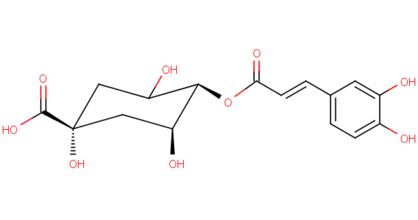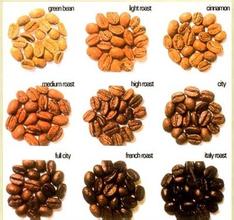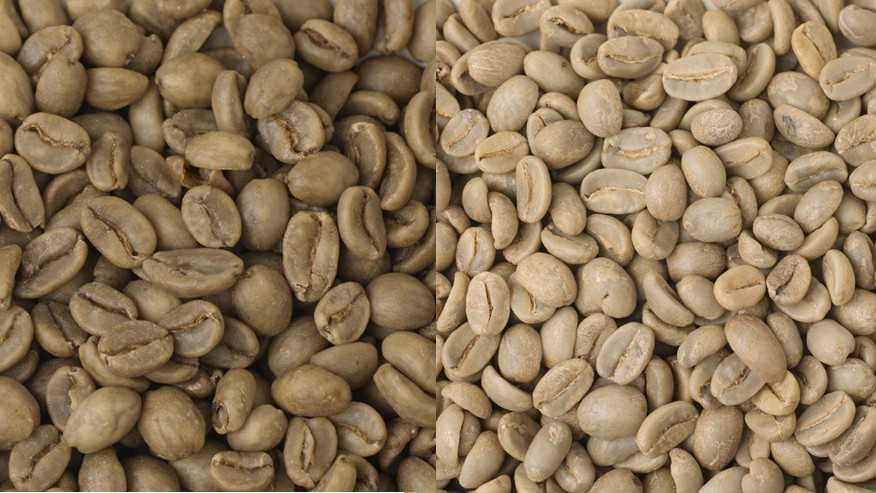SCAA Emma Bladyka chlorogenic acid: the importance of chemical changes in chemistry and reality baking
What are they?
Many plants contain chlorogenic acid in addition to caffeine. Acids have this very similar structure in the Luyuan Group, and the composition of an ester usually includes caffeic acid and quinic acid as components. All chlorogenic acids belong to a larger class of phenolic acids. In nature, phenolic acids are usually used as defensive compounds by plants, or as a signaling mechanism between plants and soil microorganisms. They account for 4% to 9% of Arabica coffee (dehydrated raw beans), which gives them the most abundant caffeic acid.
Usually, you see abbreviations of their isomers (individual chemical structures), such as 3-CQA instead of 3-caffeoylqunini acid. The most common chlorogenic acid is 5-0-caffeoylquinic acid (5-CQA), which is a commercial grade and is usually used as a placeholder in the acid family. Don't worry about the specific chemical forms of these molecules, but mixing them together is a large category of CQAs. The change in seed number of Arabica coffee beans is affected by heredity, environment, climate and production and growth conditions. In fact, a study found that the primary determinant of coffee genetics (species and varieties) is CQAs.
Some studies have focused on the CQAs ratio of mature coffee cherries. This work shows that the CQAs ratio of immature coffee raw beans is different from that of mature beans, thus affecting the quality of coffee roasting. However, there are still not enough follow-up studies to prove that this is related to the effect of coffee flavor.

Chemical changes in baking
Chlorogenic acid decomposes during roasting. The extent to which they decompose depends on the baking temperature and time, the report said. The loss of moderate baking is about 60%, while that of deep baking is 100%. Other studies have reported that CQA is decomposed by 45% to 54% in the range of "shallow" baking for 12 minutes (230 ~ 250 °C). Perrone and others reported that the coffee was roasted for only 6 minutes to retain an average of + /-47% chlorogenic acid, and they could still find that the main undecomposed part of the coffee accounted for about 44% after extraction.
During the baking process, these molecules break down into caffeic acid and quinic acid. Therefore, the effect of actual CQAs on the taste of coffee may actually be the product of its decomposition. Quinic acid and caffeic acid are by-products of different C1QAs, which are further degraded into phenols and catechins, nearly 30 other compounds. In fact, these may become a degradation of phenols and participate in other reactions that have not yet been quantified. Some of them will inevitably be converted into volatile compounds and dissipated into the air and lost, with about 10% of the CQAs extension pots evaporating. Other scientists have suggested that their reaction will cause Maillard's reaction, which means that the breakdown of these CQAs may lead to a large number of other extension reactions, which may or may not affect the taste of coffee. We know that, in the end, it is not commonly used for coffee roasting at very high temperatures (such as 482 °F), so that the pyrolysis of chlorogenic acid will lead to the results shown in the table. Eventually, most CQAs will disappear during the baking process.
Why is chlorogenic acid important?
Why do we care so much about this molecule? many studies have focused on the relationship between human health and coffee. Coffee is called "bioactive substance" by the medical profession. This means that it will have some biological effect on the human body. Chlorogenic acid, like all polyphenols, is known to have strong biological antioxidants. The antioxidant effect of coffee is still being studied, but chlorogenic acid and other polyphenols have been widely recognized to counteract the damaging effects of oxidation.
In the human body, studies have found that the acids in these coffees can slow down the absorption of glucose by the human intestine and have potential health effects on the human body. Most scientific research topics have been focused on understanding the effects of CQAs decomposition during baking, derived from the effects of its decomposition on human health benefits. Scientists hope to one day maximize the decomposition of CQAs in order to achieve the highest health benefits. Most studies on CQAs focus on health, perhaps because the most common area of coffee research is in medicine.
How does chlorogenic acid affect the taste of coffee?
There is no consensus on what effect CQAa can have on the taste of coffee extraction. Tfouni et al found that the amount of CQAs dissolved in coffee solution was not affected by different extraction methods, and the baking degree was most directly related to this. There is not much evidence to prove how chlorogenic acid affects the flavor of coffee. As a SCAA coffee scientist, I feel completely disappointed in the inspiration of this study! All the information available is just proof that CQAs exists in green coffee, and instead of breaking it down during roasting, I expect evidence of what affects the taste of coffee. Indeed, several studies have shown that a certain level of CQAs can cause bitterness, astringency, or metallic taste. However, the evidence, in the previously cited papers, is unconvincing! Simply point out that "a simple discovery and the characteristic lingering smell of metal will affect the extraction of coffee." These authors only observe these situations, but to prove the reasons. In the above statement, so this reference is not sufficient, based on which we assert that CQAs will affect the taste of coffee is not sufficient. So, why do we care so much about chlorogenic acid? Perhaps the decomposition of chlorogenic acid has an important effect on the taste of coffee, but studies have not fully proved it. On the other hand, maybe we should be particularly satisfied with the potential health benefits of CQAs and enjoy coffee. It is almost impossible to track the reaction of a single molecule in several stages of the (post) roasting process.
Like many groups of compounds found in coffee, they are ubiquitous but fleeting, involved in various chemical reactions and resulting in magical combinatorial chemistry, coffee is our favorite drink. Perhaps it is its mystery that makes us search, and perhaps it is this chase that arouses our enthusiasm.
Source: Beresta's blog
Important Notice :
前街咖啡 FrontStreet Coffee has moved to new addredd:
FrontStreet Coffee Address: 315,Donghua East Road,GuangZhou
Tel:020 38364473
- Prev

Glossary of terms for coffee roasting and roasting-explanation and analysis of professional terms of coffee bean roaster
Roasting is a new advanced field for coffee practitioners, belonging to a new professional form. A mature roaster is not only good at baking boutique coffee to restore the most memorable taste and flavor, but also to have a comprehensive and in-depth understanding of roasting and related! Terms for roasting and roasting of coffee produced by a coffee roaster produced by a burner with a high heat energy
- Next

What is decaf and decaf? Introduction of decaffeinated coffee and excessive dehydration of coffee
Many Americans are experimenting with decaffeinated coffee in the hope of getting a perfect cup of coffee that only tastes like coffee but does not stimulate the nervous system. But is decaffeinated coffee really decaffeinated? What's the difference between non-caffeinated and natural decaffeinated? Is it absolutely safe to remove caffeine from coffee? Before you know what your decaffeinated coffee is, you first need to understand it
Related
- What is the meaning of lactic acid fermentation with coffee bean treatment?
- How to judge the state of foam by sound?
- How does the latte pull out the unicorn pattern? Come to get for a little trick to improve the flower pull!
- Will flower pulling affect the taste of the latte?
- Do you know the history of coffee?
- The difference between honey treatment and sun washing what is raisin honey treatment?
- What kind of milk can a novice use to make coffee foam to keep the foam longer? The correct method and skills of milking tutorial sharing
- Why do washed coffee beans taste sour? Flavor characteristics of washed Coffee
- Introduction to the skill of how to practice the size and height of water injection around the circle of hand-brewed coffee
- How do beginners practice coffee flower drawing from scratch?

